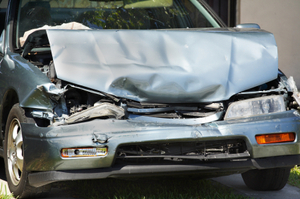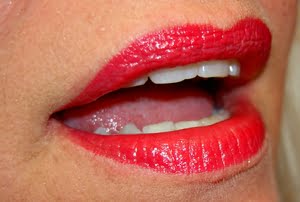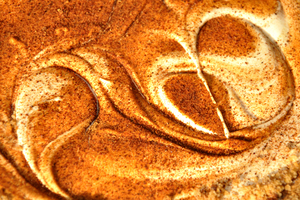Painting a car may seem simple to most that have never done any auto body work, but it can be quite a daunting task especially when it comes to painting. With the cost of paint materials rising every year you pretty much have only one shot at getting it right, the cost of materials and labor involved in repainting a car can be quite exhausting and damaging to the pocket book. I have compiled a list of common terminology in the paint and body business for imperfections in a paint job. Along with the title of the paint flaw there is also a description of it and methods for solving or correcting the imperfections in question.
Orange peel
Orange peel is when the final finish of a paint job, whether it be clear coat or single stage has a rough or un-smooth surface with poor reflection. Basically the appearance is that of the clear or single stage not “flowing out” as it should. There are many things that can cause orange peel on a vehicle’s finish. The most common causes of orange peel are an un-smooth substrate surface, such as improper sanding of primer by not getting it flat enough and not removing the orange peel that the primer already has. Using a guide coat such as black spray paint is an excellent way to ensure the finish of your primer is smooth and flat. Other causes of orange peel can be improper temperature such as being too hot in the paint booth, initially when paint is laid down on a car it has orange peel because it has not had the time to flow out; if the paint dries before it flows out such as in the condition of an overly hot paint booth you will get an orange peel a fact. One other cause of orange peel is improper gun distance (such as being to close to the surface), poor gun tip selection (too big) for clear coat for single stage and finally to thick of a material; such as a paint or clear coat that has been improperly reduced (basically not enough reducer).
Dry spray
Dry spray is in effect in which the surface of the paint lacks resolution and loss or sheen. This typically occurs by either too high of an inlet pressure to be gone causing too much atomization and creating a fog of material in the air that settles on the freshly painted surface. This is normally caused by a compound effect of too much air pressure to the gun and poor ventilation. Gun tip selection is also very crucial to preventing dry spray. Most newer HVLP paint guns are equipped with smaller tips such as 1.2 and 1.3 mm, these guns are designed for professional painters that reduce their paint materials. Most lower quality or cheaper clear coats do not require the use of a reducer. This leaves you with two options, either change or gun tip to a 1.4 or 1.5 mm and/or reduce your clear coat slightly to ensure that it comes out of the gun properly.
Sags or runs
Sags and runs (or in the industry are known as hanging curtains). Is typically caused by three to four different variables. The first problem can occur from laying on too much material, this is the most common cause. This includes two large of a gun tip or being too close to the surface. Another cause of runs and sags is from not waiting the proper flash time and allowing the material to “kick off” or become tacky and/ or from the weather being to cold. Basically, what is happening is that you are laying a heavy material on top of another material that has not properly dried; ultimately it just comes down to having too much on dry material on the panel. Improper activation or under catalyzing the material can also become a problem along with using too much reducer. So in general make sure that you’re using the correct gun tip, the right air pressure, correct temperature environment, and awaiting the proper flash times.
Color match
Correct color matching is normally an easily understood problem, this can result from improper mixing, not laying down enough base coat to cover the sealer which creates a translucent finish, or the color was mixed improperly and/or was not sprayed correctly.
Fish eyes
Fish eyes are small rounded indentations that resemble a fish’s eyes, the typical cause of this problem is from foreign substances on the surface that are incompatible with the paint. This normally happens from either not prepping for cleaning the surface of the vehicle well enough before spraying begins or from oil in the airlines or spray equipment. Before spraying you should always purge your compressors and airline water traps to prevent this from happening. Also spraying certain materials in the air near or around the surface of the prepared paint surface such as WD-40 will also cause this problem.
Dirt or “Trash”
Dirt or trash looks like small specks of sand in the finish of the paint job. This can happen from using a dirty dusty paint booth and accidentally kicking up dust or sand in the air when spraying close to the ground. A common way of correcting this problem is to wet down the floor of the paint booth prior to spraying. Another way to get trash or dirt in your paint job is by not properly straining your paint materials before they enter the gun or having an unclean gun will result in a finish with trash.
Peeling paint
Peeling can occur from numerous preparation procedures that are not correctly performed. Wet sanding the surface of a car prior to painting with too fine of a grit of sandpaper will cause him proper adhesion. Not washing down and scrubbing urethane body components with a decrease or and water and a Scotch Brite pad can also cause this problem, because of the silicone mold release agents that are used for urethane parts. Another cause of peeling can occur after spraying sealer or base coat and waiting too long of a window of time before spraying the base coat or clear coat onto the vehicle. A time window of no more than four hours maximum should be utilized before spraying the next material.
Soft paint
Soft paint is when the paint or material is easy mar or penetrate with the fingernail. This can occur for a number of reasons such as improper drying time, improper catalyst mixing ratio, excessive humidity, too cool of a temperature for spraying, and the old improper or contaminated catalyst’s.
Solvent pop or “goose pimples”
Solvent pop is normally caused by spraying an excessive amount of material on the surface of a car while the initial first coat has not properly flashed off. Using an improper reducer will also result in this problem as well as too high of a temperature in force drying, such as in a heated booth or using too much catalyst in your mixing ratio.
Mottling
This term is used to describe a spotty, non-uniform, or blotchy appearance of metallic paint. This is normally the result of a painter that is unfamiliar with spraying metallic paints. But can also be caused by water in your air lines, too cool of a temperature in the spray booth, improper gun distance, improper air pressure to the gun, or excessive material being sprayed on the car at any one time during the coating process.
Sanding scratches or “bull’s eyes”
Sanding scratches normally occur in the early stages of body preparation, using too low of a grit of sandpaper before priming will cause this result. Primer shrinks over time and is especially when heavier material is laid on top of it. Basically, the surface preparation before primer should not have any scratches deeper than 120 grit sandpaper. Also, three full coats of primer should be used; in the case that primer is sanded through to the original surface it should be re-coated with at least two more coats of primer to prevent this problem. Bull’s eyes can happen from using an improper angle with a palm sander other than keeping it flat to the surface. Or a finish similar to a bull’s eyes can appear from not properly sealing or not sealing a car surface at all before base coat is applied.
Over spray
Over spray is typically caused by improper airflow and ventilation in the paint booth, such as stagnated air and an accumulation of paint fumes and over spray in the air that are not sucked from the room. Also, not spraying a car fast enough will also result in over spray on the top surfaces. Too high of the air pressure to the gun can also cause this problem.





